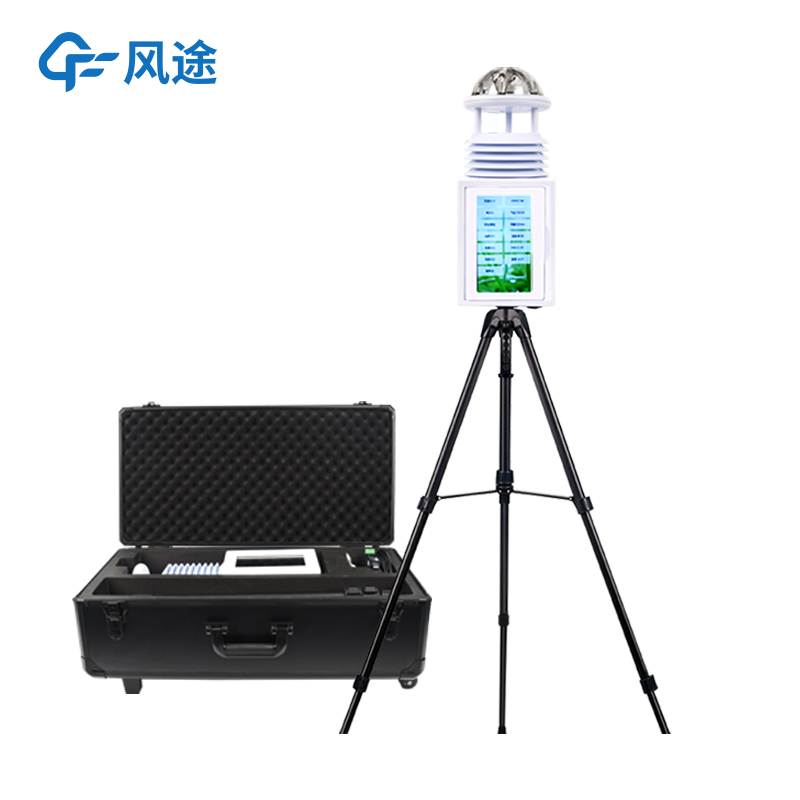Shandong Fengtu IOT Technology Co., Ltd
Sales Manager:Ms. Emily Wang
Cel,Whatsapp,Wechat:+86 15898932201
Email:info@fengtutec.com
Add:No. 155 Optoelectronic Industry Accelerator, Gaoxin District, Weifang, Shandong, China

Sales Manager:Ms. Emily Wang
Cel,Whatsapp,Wechat:+86 15898932201
Email:info@fengtutec.com
Add:No. 155 Optoelectronic Industry Accelerator, Gaoxin District, Weifang, Shandong, China
time:2025-07-03 09:40:44 source:Weather Station viewed:143 time
Weather stations, as the primary equipment for monitoring weather changes, play a crucial role in meteorological forecasting, environmental monitoring, agricultural production, and other fields. Among the diverse types of weather stations, the Portable Weather Station stands out with distinct features that set it apart from others.
Portable Weather Stations typically adopt an integrated design, featuring a compact size and lightweight construction. The core monitoring unit often weighs no more than 5 kg, enabling easy carrying and mobility for rapid meteorological monitoring at different locations. Some models can be equipped with vehicle-mounted tray brackets for mobile observations on vehicle roofs, significantly enhancing monitoring flexibility. In contrast, traditional weather stations (such as mechanical ones) have complex structures composed of meteorological sensors, data loggers, solar power systems, pole-mounted brackets, cloud platforms, and other components. Their large size and heavy weight make them unsuitable for portability, thus better suited for long-term fixed-site monitoring.
Thanks to its simple installation and lack of need for fixed infrastructure, the Portable Weather Station allows for rapid deployment and immediate use. This is particularly critical in emergency scenarios, such as on-site weather monitoring after natural disasters. Traditional weather stations, however, involve complex installation processes—including foundation construction, equipment fixing, and cabling—that require lengthy time and professional technicians, failing to meet the need for quick response.
Portable Weather Stations are widely used in meteorological monitoring and early warning, environmental protection, agriculture, aviation, and more. In emergency rescue operations, they provide real-time weather data and advance warnings to guide rescue strategies. For outdoor enthusiasts like mountain climbers and hikers, they help plan routes to avoid severe weather. Traditional weather stations, meanwhile, are ideal for long-term, continuous observations, commonly found in meteorological stations, research bases, and other fixed locations.
The Portable Weather Station’s rapid deployment and flexible operation complement other weather stations, collectively providing comprehensive and timely meteorological information services. When selecting a weather station, it is essential to choose the most suitable type based on specific needs and application scenarios.

Why choose a Portable Weather Station?First, it is small in size and light in weight, making it easy to carry to different locations. Whether for scientific research in remote mountainous areas, agricultural monitoring in vast farmlands, or rescue sites after natural disasters, a Portable Weather St...
Meteorological changes have a crucial impact on numerous fields. In agricultural production, meteorological conditions are directly related to the growth and harvest of crops. Through meteorological monitoring, people can obtain weather information in advance, arrange agricultural activities reasona...
Emergency meteorological monitoring refers to the rapid and accurate monitoring and analysis of relevant meteorological parameters during sudden meteorological disasters or emergency events. Its purpose is to provide timely and reliable meteorological evidence for emergency decision-making, so as to...
Rain, fog, and other harsh weather conditions are major "adversaries" threatening traffic safety. Low visibility in particular severely impairs drivers' vision, highly increasing the risk of traffic accidents and causing casualties and property losses. The emergence of Atmospheric Visi...